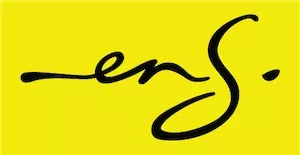Casadobe owns a boutique wine estate called CANTO in Durbanvillle wine valley, Western Cape. Fratelli (an Italian company) is the registered proprietor of the South African trademark CANTI for wines and sparkling wines (Class 33).
Casdobe applied for the registration of its CANTO trademark in 2015 in various classes, including class 33.
Arguments
Fratelli contended that CANTO is visually, phonetically and conceptually confusingly similar to CANTI.
Casadobe argued that even though the first four letters of CANTO and CANTI are the same, a single letter can make an “enormous difference in relation to trade marks”. According to Casadobe, the ‘I' and the ‘O' at the end of the respective trade marks are of fundamental importance for the purpose of distinction.
The High Court granted an interdict in favour of Fratelli, finding “CANTO” and “CANTI” to be visually, aurally, and conceptually similar.
Casadobe appealed the decision.
Supreme Court of Appeal
The SCA found that “consumers of wines, including sparkling wines, are quite discerning. They are likely to exercise circumspection and a greater degree of care in making a purchase.” In addition, “the notional consumer would in no way be confused on encountering the two marks in the market place as the CANTO mark would be found on South African wines or MCCs while Fratelli's CANTI mark would be found on the imported (Italian) wine section of the store.”
The SCA also held that “The finding of the high court that the two marks are closely similar, and their pronunciation sounds similar, is incorrect. A further finding that the single letters ‘I' and ‘O', which happen to be right at the back of the words, do not sufficiently distinguish the marks from each other is equally incorrect. The conclusion that trade marks CANTO and CANTI are visually, aurally and conceptually similar and that there exists a likelihood of confusion or deception among consumers is wrong. Therefore, the appeal must succeed.”
SCA Decision
The SCA overturned the High Court's decision, ruling that it was improbable that the public would be deceived or confused by the similarity between “CANTO” and “CANTI”.
It, therefore, dismissed the application with costs, including the costs of two counsel. Full judgment can be accessed here.
Key Lessons
The importance of obtaining specialised IP expertise for your brand selection phase cannot be overstated. The search should identify the risks of proceeding with a brand and possible steps to mitigate (or avoid) these risks. This will hopefully save you the significant costs of litigation down the line once you have committed to the brand (and are less likely to want to rebrand).
The content of this article is intended to provide a general guide to the subject matter. Specialist advice should be sought about your specific circumstances.


